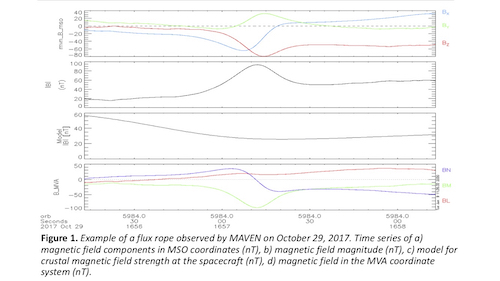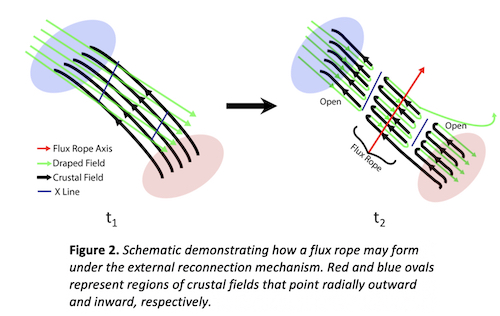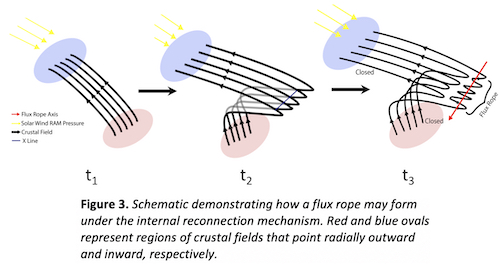Gina A. DiBraccio, Norberto Romanelli, Jacob R. Gruesbeck, Jasper Halekas, Suranga Ruhunusiri, Jared Espley, Gangkai Poh, John E. P. Connerney, Shaosui Xu, Tristan Weber, Janet Luhmann, and David Brain
At Mars, recent studies based on a combination of MAVEN data and modeling have determined the Martian magnetotail exhibits a ~45° twist, either clockwise or counterclockwise from the ecliptic plane, away from the nominal interplanetary magnetic field (IMF) draping morphology. An initial study by DiBraccio et al. [2018] employed MAVEN magnetic field measurements, coupled with MHD simulations, to indicate that the twist is likely a result of the sun-planetary interaction. Now with several more years of MAVEN data available, we augment this work using a statistical analysis of MAVEN magnetic field data from November 2014 through November 2019. We utilized ~6000 orbits, requiring that MAVEN observed both the magnetotail and the upstream IMF over a given orbit. For periods when the upstream IMF measurements were not available due to MAVEN’s orbit precession, we utilize an IMF proxy to determine characteristics of the upstream orientation. The location of the magnetotail lobes, identified in the data as the regions of magnetic field behind the planet directed towards and away from Mars, are analyzed as a function of the upstream IMF dawn-dusk component. In the previous DiBraccio et al. [2018] study, this dawn-dusk component was found to be the separating factor in the direction of magnetotail twisting. To quantify the degree of tail twisting for a given scenario, we determine the vector between the center of the towards/away tail lobes and calculate the angle between this vector and the expected direction for nominal IMF draping. This calculated tail twist angle is then assessed as a function of a variety of factors including strong crustal field location, Mars season, and downtail distance. In all cases, we determine that the degree of tail twisting is larger when the IMF is oriented in the duskward direction, suggesting enhanced coupling between the IMF and planetary crustal fields. Furthermore, we demonstrate that the degree of tail twisting exhibits different trends for crustal field orientation under dawnward versus duskward IMF configurations. Seasonal variations indicate that tail twisting may vary over the course of the Martian year, but additional data are needed during the northern fall and winter periods for confirmation. Finally, when assessing the tail twist with downtail distance we find that the degree of twisting increases with distance from the planet. This result is similar to Earth where observations of the magnetotail twist increases away from the planet as the torque exerted by the IMF on the planetary field increases. From these findings we confirm that the tail twist at Mars is likely a result of the direct interaction between the IMF and the planetary crustal fields; however, we find evidence suggesting that the degree of twisting is larger for duskward IMF orientations. This implies that magnetic reconnection on the dayside of Mars, between the IMF and crustal fields, may be favorable under specific IMF configurations.




